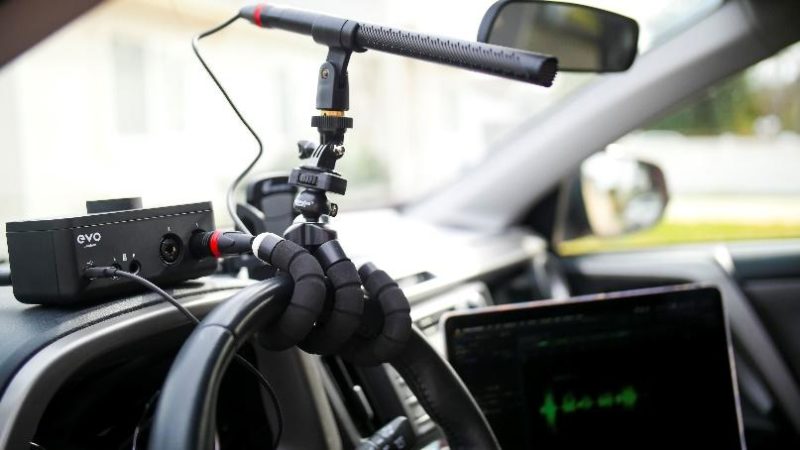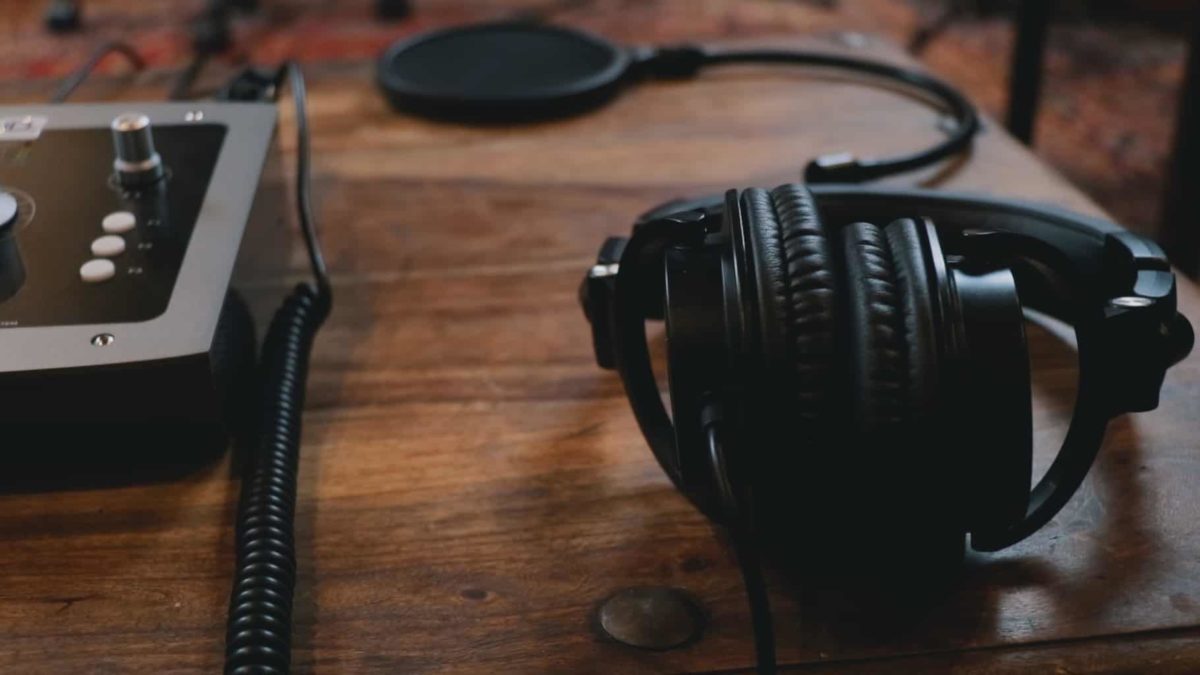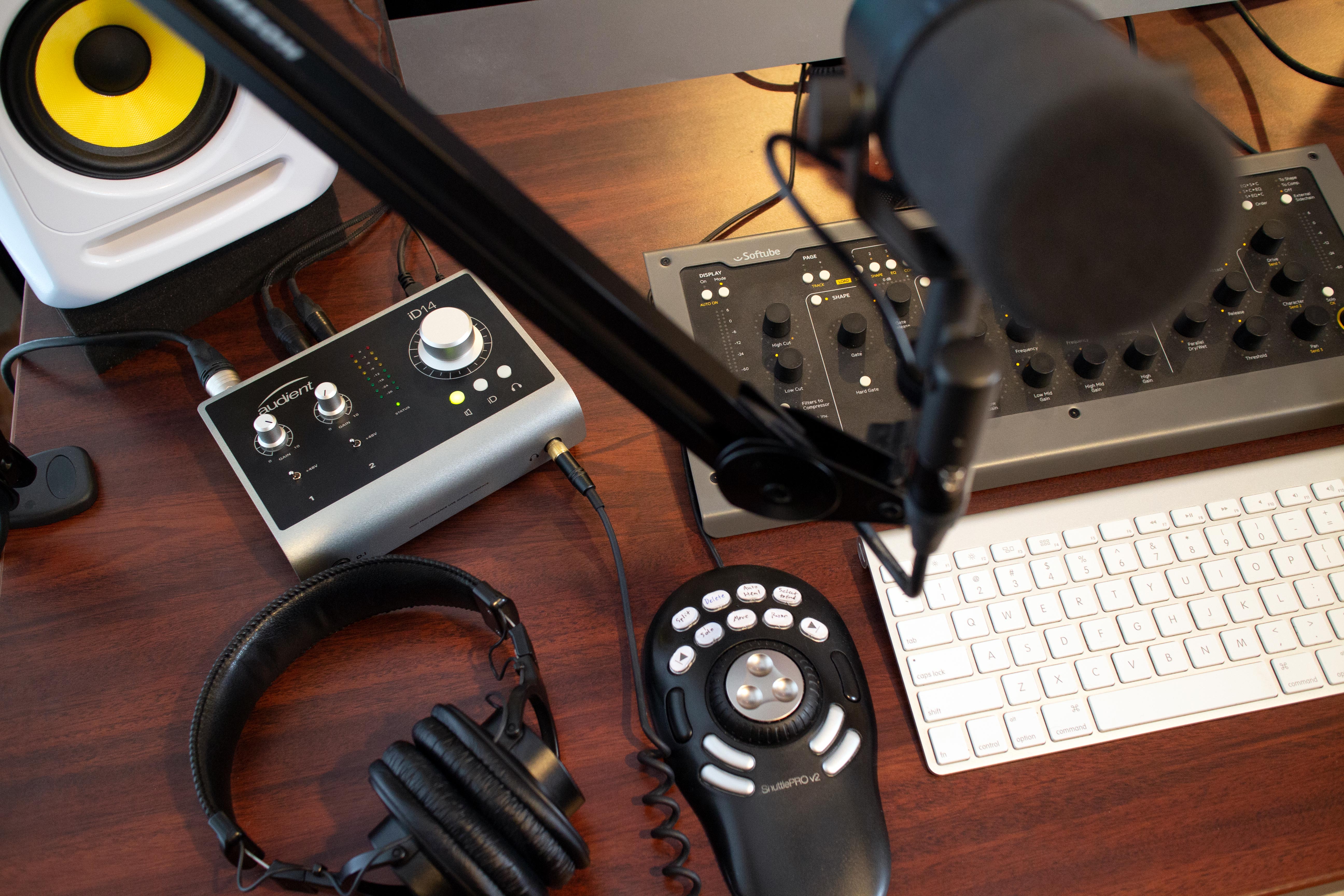When out of town, figuring out how you will be able to create professional sounding auditions or record bookings can really cause a panic. It is never an ideal situation to be in when sending in performances with screaming children in the background or booming reflections from an empty hotel room.

Written by Paul Castro Jr
Paul is an Actor and Filmmaker from New York City. In the world of V.O., he has voiced countless commercials and promos for networks like Nickelodeon and various animated shows and video games. On television, he has appeared on shows such as God Friended Me, Blue Bloods, and Limitless. As a producer, he recently released the documentary Madonna and the Breakfast Club on Hulu. His passion for voice acting led him to Los Angeles where he now resides with many projects in production. www.PaulCastroJr.com @PaulCastroJr
Luckily, there are numerous ways to keep out unwanted noise and even create an acoustically pleasant environment with solutions that are all around you. I will be breaking down the specific pieces of gear that function well in untreated environments as well as various places to record, in order to achieve the best sound possible when outside of your home studio.
GEAR
The microphone that I suggest bringing on the road is the Sennheiser MKH 416. Often touted as one of the best mics for voice over and an industry standard, the shotgun style mic was built for use in outdoor environments on movie sets. Its unidirectional hypercardioid polar pattern avoids unwanted noise from everything off its front axis and is durable enough to handle numerous setups and breakdowns. The mic comes with a quality travel case, shotgun mic clip and foam windscreen pop filter, giving you all the accessories you will need in one box. Similar mics like the RODE NTG series, Synco D2, or Deity S-Mic 2 are also proficient on a lower budget. You will also need a USB powered interface, like the EVO4, that can plug right into your laptop or tablet without the need of external power.
Safely rigging equipment without typical mic stands or proper mounts has simple solutions. Purchasing a flex-arm GorillaPod tripod from companies like JOBY will allow you to place or attach your mic on nearly any object or surface. Just make sure that your tripod has the proper screw head adapter for your specific mic mount.
LOCATIONS
One of the easiest and potentially free options for creating a mobile recording booth could be sitting right in your driveway. If you are visiting home, a family member, friends or arranged to rent a vehicle while traveling, then look no further for your temporary studio. A car can serve as the perfect isolation booth with built-in insulation and material inside that can help absorb sound. Sitting in a parked car on a quiet street can create noise floors below -60dB, suitable for broadcast bookings. If you want to eliminate noise even further, bringing the vehicle into a carport or garage and using sound deadening mats can prevent occasional traffic, sirens, or birds.

I recommend attaching the mic stand to the steering wheel and sitting in the driver’s seat for comfort and accessibility, though wherever you can safely place your equipment and get the best sound will do. It might take some testing for your specific vehicle. You will more than likely be keeping your car with its engine turned off when rolling, so purchasing a portable external charger that you can plug your laptop into might also prove important. I have recorded numerous radio commercials and even directed sessions from inside my SUV with a resulting sound you’d bet money was from my home studio.

Another great option that also serves as many voice over actors’ first home studio, is a closet. Most will think they need a gutted walk-in with foam tiles hung up all around, but actually a stuffed closet with tons of clothing, blankets or towels can be even better as the abundance of material functions just like acoustic treatment, absorbing reflections. If you have access to a packed walk-in, simply bring in a side table or desk, throw a blanket over it and you are good to go. If it’s a tight space, place the mic in-between clothes on the rack and attach the mic to the closet’s hanger bar. The more packed, the better… so long as you can move and breath!

The most common scenario for those of us who travel a lot due to work or for family, is figuring out what to do in an empty hotel room. While you might be able to create your own little pillow fort (which can sound great by the way), the last thing you need worry about is a lamp crashing down on you mid audiobook. This is where products like the mobile recording booth by Tri-Booth or Vocal Booth To Go are fabulous. These are obviously premium purchases but if you are constantly on the go, having a surefire solution that is travel-made might be your best option. The resulting sound that these solutions provide is top quality, being built to ensure optimal mic placement and comfortability. Similarly, if you or someone you know is “handy”, making your own with detachable PVC pipes and sound blankets that fit in a travel suitcase would be another cost effective alternative.
No matter how you choose to record, creating a system and workflow that is easily replicated will help to take the stress out of being away from your home studio.
*Do not record when operating or driving a vehicle.
Related Articles
When out of town, figuring out how you will be able to create professional sounding auditions or record bookings can really cause a panic. It is never an ideal situation to be in when sending in performances with screaming children in the background or booming reflections from an empty hotel room.

Written by Paul Castro Jr
Paul is an Actor and Filmmaker from New York City. In the world of V.O., he has voiced countless commercials and promos for networks like Nickelodeon and various animated shows and video games. On television, he has appeared on shows such as God Friended Me, Blue Bloods, and Limitless. As a producer, he recently released the documentary Madonna and the Breakfast Club on Hulu. His passion for voice acting led him to Los Angeles where he now resides with many projects in production. www.PaulCastroJr.com @PaulCastroJr
Luckily, there are numerous ways to keep out unwanted noise and even create an acoustically pleasant environment with solutions that are all around you. I will be breaking down the specific pieces of gear that function well in untreated environments as well as various places to record, in order to achieve the best sound possible when outside of your home studio.
GEAR
The microphone that I suggest bringing on the road is the Sennheiser MKH 416. Often touted as one of the best mics for voice over and an industry standard, the shotgun style mic was built for use in outdoor environments on movie sets. Its unidirectional hypercardioid polar pattern avoids unwanted noise from everything off its front axis and is durable enough to handle numerous setups and breakdowns. The mic comes with a quality travel case, shotgun mic clip and foam windscreen pop filter, giving you all the accessories you will need in one box. Similar mics like the RODE NTG series, Synco D2, or Deity S-Mic 2 are also proficient on a lower budget. You will also need a USB powered interface, like the EVO4, that can plug right into your laptop or tablet without the need of external power.
Safely rigging equipment without typical mic stands or proper mounts has simple solutions. Purchasing a flex-arm GorillaPod tripod from companies like JOBY will allow you to place or attach your mic on nearly any object or surface. Just make sure that your tripod has the proper screw head adapter for your specific mic mount.
LOCATIONS
One of the easiest and potentially free options for creating a mobile recording booth could be sitting right in your driveway. If you are visiting home, a family member, friends or arranged to rent a vehicle while traveling, then look no further for your temporary studio. A car can serve as the perfect isolation booth with built-in insulation and material inside that can help absorb sound. Sitting in a parked car on a quiet street can create noise floors below -60dB, suitable for broadcast bookings. If you want to eliminate noise even further, bringing the vehicle into a carport or garage and using sound deadening mats can prevent occasional traffic, sirens, or birds.

I recommend attaching the mic stand to the steering wheel and sitting in the driver’s seat for comfort and accessibility, though wherever you can safely place your equipment and get the best sound will do. It might take some testing for your specific vehicle. You will more than likely be keeping your car with its engine turned off when rolling, so purchasing a portable external charger that you can plug your laptop into might also prove important. I have recorded numerous radio commercials and even directed sessions from inside my SUV with a resulting sound you’d bet money was from my home studio.

Another great option that also serves as many voice over actors’ first home studio, is a closet. Most will think they need a gutted walk-in with foam tiles hung up all around, but actually a stuffed closet with tons of clothing, blankets or towels can be even better as the abundance of material functions just like acoustic treatment, absorbing reflections. If you have access to a packed walk-in, simply bring in a side table or desk, throw a blanket over it and you are good to go. If it’s a tight space, place the mic in-between clothes on the rack and attach the mic to the closet’s hanger bar. The more packed, the better… so long as you can move and breath!

The most common scenario for those of us who travel a lot due to work or for family, is figuring out what to do in an empty hotel room. While you might be able to create your own little pillow fort (which can sound great by the way), the last thing you need worry about is a lamp crashing down on you mid audiobook. This is where products like the mobile recording booth by Tri-Booth or Vocal Booth To Go are fabulous. These are obviously premium purchases but if you are constantly on the go, having a surefire solution that is travel-made might be your best option. The resulting sound that these solutions provide is top quality, being built to ensure optimal mic placement and comfortability. Similarly, if you or someone you know is “handy”, making your own with detachable PVC pipes and sound blankets that fit in a travel suitcase would be another cost effective alternative.
No matter how you choose to record, creating a system and workflow that is easily replicated will help to take the stress out of being away from your home studio.
*Do not record when operating or driving a vehicle.





